How I Invest My Money: Part I
I used to send new clients an email that outlined how Carley (that’s my wife) and I invest and manage our finances. I did it for a about year because I wanted to be as transparent as possible. Most new clients noted how important it was knowing that I was invested alongside them. I really don’t know why I stopped sending out that communication.
I originally wrote it in 2021 when interest rates were near zero, stocks were going insane, and the pandemic was still in full force.
Below is exactly what I wrote, untouched. I’ll follow it with my updated thoughts and how my views have changed almost four years later.
Comments from Vince in April 2021
“Don’t tell me what you think. Tell me what you have in your portfolio.”
- Nassim Taleb
I recently read a book titled “How I Invest My Money.” The quote above is from the conclusion, after 26 different financial professionals provide an inside look at how they invest their own money – not their clients’ money. I work in a profession that is exceptionally personal. In my eleven plus year career as a financial advisor, there has never been a case where I’ve been able to say, “another client does it this way, and I think it’ll work for you too.” When it comes to what’s important from a financial perspective, every single person, business, and family that I work with is different.
And none of that should come as a surprise, but I feel it’s important to share nonetheless. It’s also a caveat, because though I am sharing how I invest Carley (that’s my wife) and my life savings – and though you’ll see that I advise much the same way that Carley and I invest – there will be stark differences too. That’s because we all have different values.
My dad is one of the most conservative people I know when it comes to finances. My mum on the other hand, is a risk taker. She’s told me about how she has borrowed to invest, reads risk-on investment newsletters, and wouldn’t invest in bonds or fixed income if her life depended on it. They’ve been happily married for a very long time, and I would best describe my dad as being happily apathetic when it comes to their finances – unless it involves debt. To that point, my mum will always remind me and my siblings (I’m the youngest of three) that it was dad’s decision to get a fixed-rate mortgage that saved them from financial ruin the 70s and 80s. You’ll find that in some instances I’m like my dad, and in others I’m a lot like my mum.
Carley, like my dad, is happily apathetic, and though I try hard to involve her in our personal finances, she won’t bite. That leads me to the very first part of our financial picture.
We own a lot of life insurance. Any one of my colleagues or competitors would tell me I have way too much of it, and I would agree. The last I checked I have about $4,000,000 worth. Now, I’m frugal – my parents only ever bought things when they were on sale – so it’s all in twenty-year term. I own that much because of Carley’s apathy. If I die, she won’t ever have to worry about money. In twenty years, our savings should be sizeable enough that we won’t need to renew those polices (I hope). Carley owns about $1,000,000 of coverage. If she dies before me, instead of grieving, I’ll probably turn into a workaholic. But I know it’s inevitable that I’ll eventually burn out and go into a pretty bad place, so that $1,000,000 will help when I have to take time off.
I also own $250,000 of critical illness insurance, because if I get sick, I don’t want to be a financial burden to anyone. Thankfully, my mum made me buy it when I was twenty, so that policy is dirt cheap. The only disability insurance I own is work’s group plan. It’s a good plan, and if I tried to buy a personal policy, the cost would be outrageous. Carley owns $150,000 of critical illness insurance for the same reasons.
Comments from Vince in November/December 2024
Apart from the grammar and syntax being a bit amateurish, I have three comments.
- The Taleb Quote. I still love this quote. What someone actually does with their money speaks volumes. It’s a good reminder to ask for specifics, not opinions.
- Interest Rates. When I wrote this, interest rates were close to zero. You all know what’s happened since then. Old Man Herlaar’s cautious approach to debt in the 70s and 80s resonates more than ever.
- Life Insurance. I know I have too much life insurance. Every advisor I know would tell me to cut it back. But if I die unexpectedly, Carley and the cats (I know she’ll get more of them) will be able to live worry free. That’s worth the cost.
That’s the first part of our financial picture. We’ll talk investments in Part II and our financial plan in Part III. My investment philosophy has changed quite a bit since 2021, but my financial plan has stayed largely the same.




